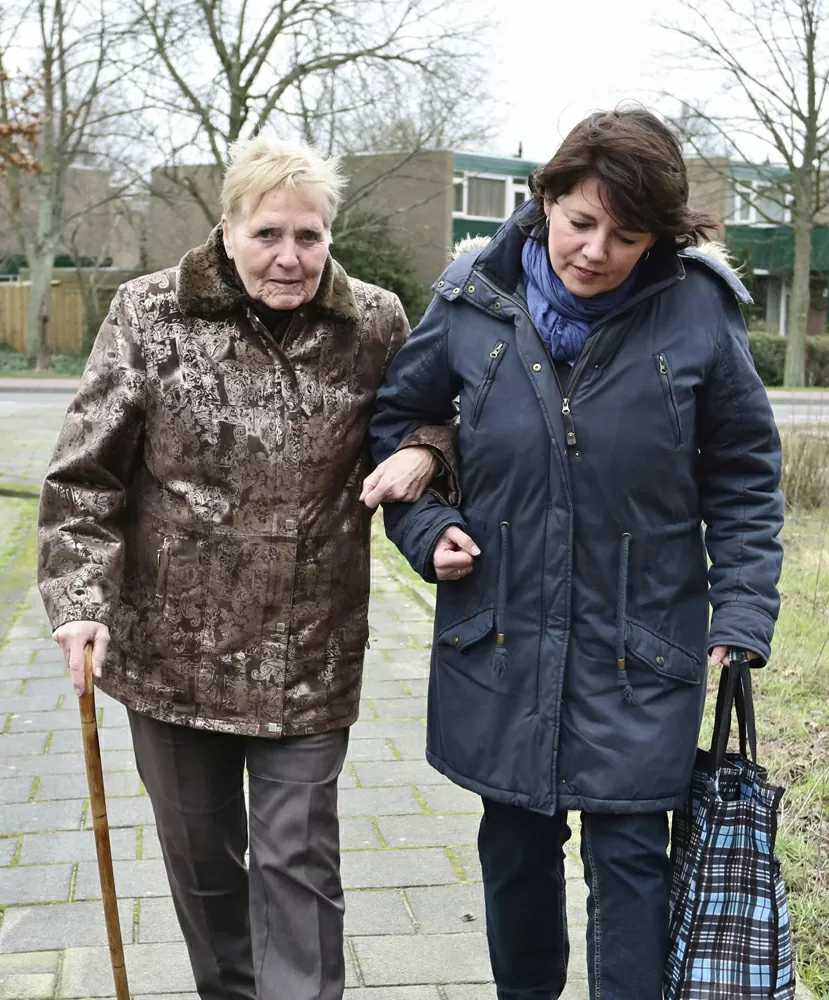Burbank, CA Speaking at the C4A Conference 2023: Mapping the Future of Aging and Disability in California, held here May 9-11,  two Los Angeles County employees described the success they have had in finding Alzheimer’s and dementia patients who wander off. To date they have had 26 successful saves of wanderers and hope to bring the program to all of California, and eventually all of the U.S.
It’s called the L.A. Found Initiative and has been rolled out by the Aging and Disabilities Department, a division of Adult Protective Services (APS) and the Los Angeles County Sheriff’s Office. The L.A. Found Initiative uses a device provided by a non-profit called Project Lifesaver.
Cinthie Lopez Paz, Leader, L. A, Found Initiative, said, “Addressing those family members of those who are wandering has been difficult. There is a lot more work to be done.  Families don’t call law enforcement right away, that has been a challenge for us as time is of the essence. We have tried in various ways to get that message out there, they need to call the authorities right away,†she said.
The genesis of the program was that a woman went missing and eventually was found to be dead after wandering off. She had no past history of doing so and the whole incident was a complete shock to her family. The Board of Supervisors decided to put together a Task Force on wandering. They met for about 18 months, and as a result of their work a report of 17 strategies were put together and approved by the Board. “And we are one of those 17 strategies so we can have better outcomes in wandering situations,†said Paz.
Participants in the program wear a bracelet that emits a signal constantly. The normal range of antennae is 3 to 5 miles. “The person could have wandered in any direction so this really increases the chances of finding the person. For this particular device, time is of the essence,†said Paz
She said that they have actively been engaging with law enforcement in order to get buy-in. Although not for everyone, she noted that “Some type of technology is better than none. Because wandering behavior is unpredictable.â€
Christina Michii-Raggio, Community Services Analyst with the L.A. County Aging & Disabilities Department, said that “It is rewarding to work for this population but there is so much need. We work closely with the Alzheimer’s data,†she said, which was dire (see Alzheimer’s presentation).
She noted that over 60% of those living with Alzheimer’s disease will wander at some point. The number of people with Alzheimer’s disease is actually unknown because 10% of Americans age 45 and older reported subjective cognitive decline, but 54% of this group had not consulted a healthcare professional, according to The Behavioral Risk Factor Surveillance System survey.
She said that a Project Lifesaver Tracker has a radio frequency RF with a number unique to each individual so that specially trained search and rescue teams can triangulate the signal and locate the person. In this project, members of the L A County Sheriff’s Mental Health Evaluation Team are trained in the use of the equipment and in mental health. The implementation of the strategic methods specifically designed for the program.
The Aging & Disabilities Department in collaboration with the LA County Sheriff’s Department administer the program in LA County. The tracking bracelets as well as replacement batteries, spare parts, continued support and recommendations to keep the loved one safe are provided for free by Project Lifesaver, which is a 501 (c)3.
Eligibility:
Alzheimer’s dementia or autism
Prone to wandering
L.A, County Resident
www.lacounty.gov
It’s not just for Alzheimer’s patients–19% of over 1,000 units deployed have gone to those with Alzheimer’s, 31% have dementia, 26% are autistic, and about 5% have multiple dementia and disability.
The person receiving the equipment must have a Surrogate Decision Maker in the following order of priority:
Spouse
Domestic partner
Adult son or daughter
Custodial Partner
Adult brother or sister
Adult grandchild
Available adult relative (with the closes degree of kinship)
They also have a referral process so social services and other agencies can refer an individual. In addition, they do focus on alternative technologies like free applications on your cell phone or GPS/Cell based tracking devices.
For a list, click on this link.







